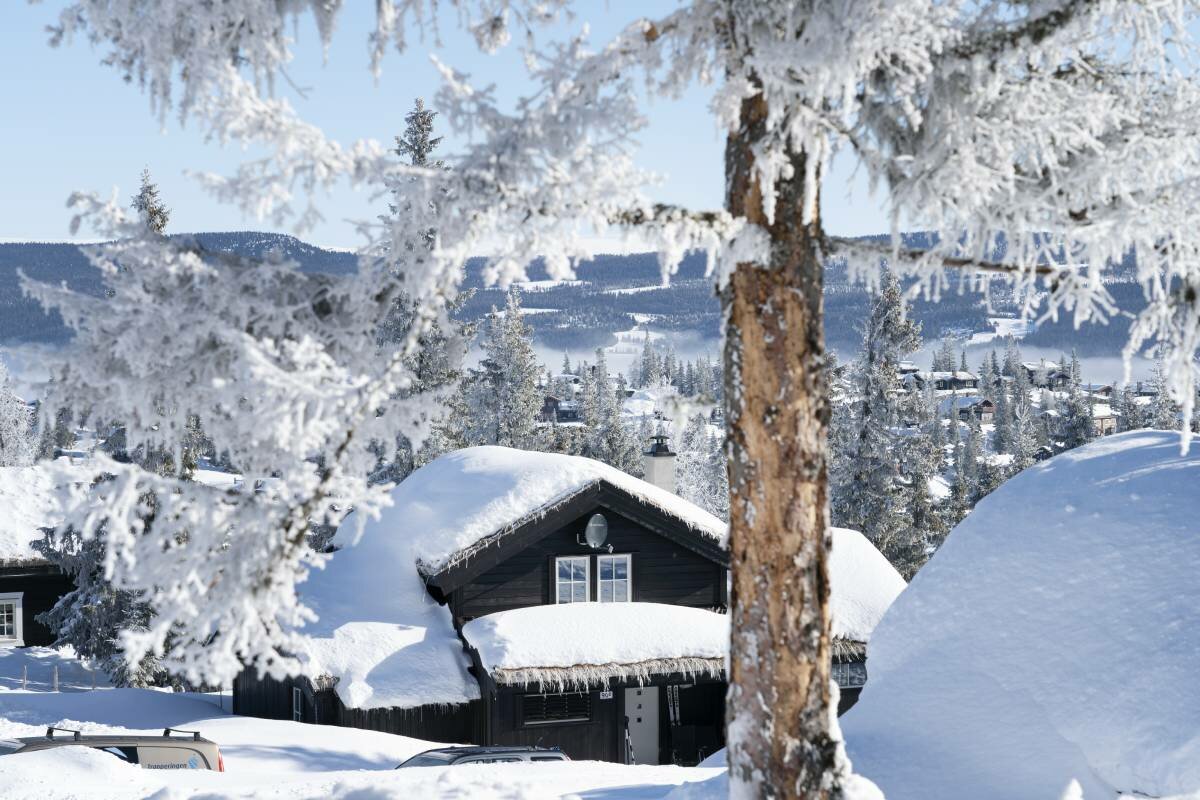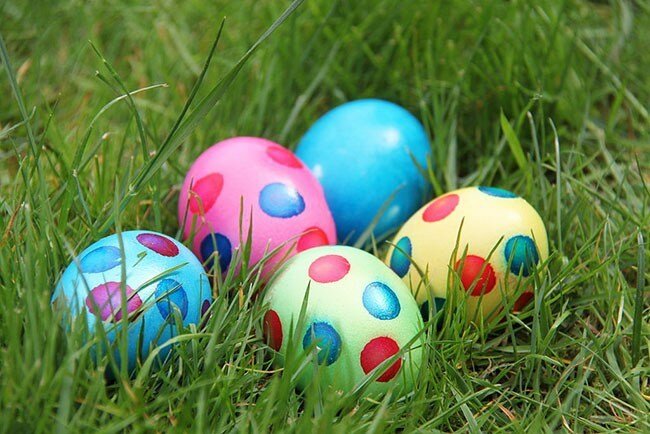As winter gives way to spring and the snow melts, the season of Easter (Påske) is a favorite time of the year for many Norwegians. Norway has varied and strong traditions throughout Easter, ranging from the religious to the delicious!
What is Påske?
Easter – or as it is known in Norway – Påske is a Christian religious and (more commonly) cultural festival that commemorates the resurrection of Jesus Christ from the dead. First described in the New Testament of the Christian Bible, Easter was first a small celebration for Jesus’s followers but now is celebrated throughout the world in most cultures and countries.
Easter is an important religious festival throughout all the world’s Christian denominations from Roman Catholic to Orthodox and the many Protestant denominations of which the Church of Norway is but one. The Church of Norway (as Norway’s former state religion) defined the beginning of Påske as the start of the “Holy Week.” This week begins with the celebration of Jesus’s arrival in Jerusalem (palmesøndag, Palm Sunday) and includes the public holidays of Holy Thursday (skjærtorsdag) and the climax of the week, Good Friday (langfredag), the day Jesus was crucified.
When is Påske celebrated in Norway?
Following the religious sobriety of the week, comes Easter Weekend (påskeaften) This is often a celebration of new life and the first holiday season of the year. Easter Sunday (første påskedag) is the climax of the Easter season when many families gather to share a lunch or dinner. Easter Monday (andre påskedag) is the last chance many will get to have a day off before the May holiday season.
Norway essentially shuts down for three days over the Easter period – skjærtorsdag, langfredag, and andre påskedag – coupled with the weekend in between gives most Norwegians a 5 day holiday for the price of 3! All shops (including food stores and the Vinmonopolet) close at 3:00 PM on the Wednesday before skjærtorsdag so be sure to stock on supplies!
This year, første påskedag will be celebrated on April 17 – a somewhat relatively late date. As Påske is a moveable feast, the date changes every year based on the solar year plus the phase of the moon.
A time for religious observance and family gatherings
How you celebrate Påske in Norway depends on many factors including how religious you are and your family traditions. However, one thing is common: Påske is a BIG deal in Norway.
For those that are religious, it is the most important time of the year in the Christian calendar. Påske is at the end of the 40 days of fastetiden (Lent). These 40 days that lead up to the Påske period are a time of quiet inner reflection, fasting, and self-deprivation which contrasts with the joyful celebration of Påske. Many Norwegians attend a church service at some point throughout Påske with many choosing to attend on langfredag. As this day commemorates the death of Jesus Christ, it is the most solemn day on the Christian calendar. Many also attend on første påskedag – with the resurrection of Jesus making the tone of the service more joyful and light than other Påske days.
Family gatherings are also popular throughout Norway during Påske. For a country whose familial cultural traditions are perhaps not as strong as their southern neighbors, a family gathering is indeed a big deal in Norway. Multiple generations of a family will catch up for a meal (often a late lunch or dinner) and exchange small gifts or – more commonly – chocolate! As there are many public holidays throughout the Påske period, this gives Norwegians the chance to travel to other parts of Norway where other members of their extended family live. Airports and roads can often be busy throughout this period.
Last chance to ski and first chance for a sunny holiday
For those that are not religious or family-oriented, Påske is the perfect opportunity for one of two favorite activities for Norwegians: the last chance to ski and a first chance to get a sunny holiday. Påske represents the last chance that many Norwegians will get to have a ski holiday before the snow (eventually) melts by late spring. As such, ski resorts throughout the country, such as Hemsedal, are popular and will be fully booked. Given that travel restrictions have also lifted throughout most of Europe, expect a horde of Norwegian skiers to flock to ski resorts throughout the Alps in Italy, Switzerland, or France.
For those that would rather not hurtle down mountains on two planks of wood, Påske is a chance to get a well-deserved break following the first quarter of the year. Many Norwegians spend the whole Påske period at their hytte (cabin). This can often be a sort of a working holiday as some general maintenance – or a fresh coat of paint – may be required after the winter season. For many others, Påske is a time to jump on a plane and head off to warmer climes to chase the sun. The southern and western coast of Norway remains perennially popular whilst further abroad Spain is becoming an ever more popular destination for Norwegians wanting a truly sunny Påske.

Påskekrim – a very Norwegian tradition
For many Norwegians, Påske means only one thing: reading a crime novel! This very peculiar and unique tradition dates back nearly a century. In 1923, a Norwegian publishing house took out a full-page ad advertising a robbery on the Oslo to Bergen railway line. What many did not realize was that this was not a news story but the plot for a crime novel. The publisher saw a huge surge of demand for this crime novel and the Norwegian obsessions with påskekrim (Easter crime novels) was born.
Publishing houses often rush out new crime novels before Påske begins and it is not uncommon to see bookstores packed at this time of year with Norwegians buying the latest påskekrim novel. Famous Norwegian authors, like Jo Nesbø, have released påskekrim novels and it is one of the most cherished cultural traditions in Norway today. How better to spend a well-deserved Påske holiday than by reading a murder mystery or a “whodunnit” crime novel?
What do Norwegians eat throughout Påske?
Unlike other countries or cultures, there are no strong culinary traditions for a family dinner during Påske. However, lamb and vegetables are quite common, and many more religious Norwegians chose to follow Christian tradition and not eat meat on langfredag.
The most popular part of Påske for many Norwegians, young and old, is, of course, chocolate! Chocolate eggs and Easter bunnies are (often over) consumed throughout Påske. As many Norwegians will be having their last ski of the year, sales of the chocolate Kvikk-lunsj (a bar of wafer-based chocolate) often skyrocket. This is often paired with an orange or tangerine and these are popular snacks throughout the holidays.
Like Christmas, many breweries release a seasonal beer (påskeøl) whilst Irish Coffees (especially after a day’s skiing) are also imbibed. Påske can be the time of the year where Rosé wine first makes an appearance for the year as it is often associated with sunnier and warmer days.

A special time of the year
Påske is more than just a religious holiday – it is that special time of year when the worst of the winter days are behind us and the weather will only get warmer and better. New life blooms and the snow melts as overindulging in chocolate is permitted. For many, it represents a break, a holiday, a chance to meet the family again or just to cuddle up on the couch and binge-read crime novels. However you celebrate it, there is no doubt that Påske is a clear favorite time of the year for Norwegians and all those that live in Norway.
God Påske!
Source : #Norway Today / #NorwayTodayTravel
Do you have a news tip for Norway Today? We want to hear it. Get in touch at [email protected]




I enjoyed reading this article about the Paske tradition in Norway including the festivities that go with it
Very nice read.THANK YOU.God Påske.